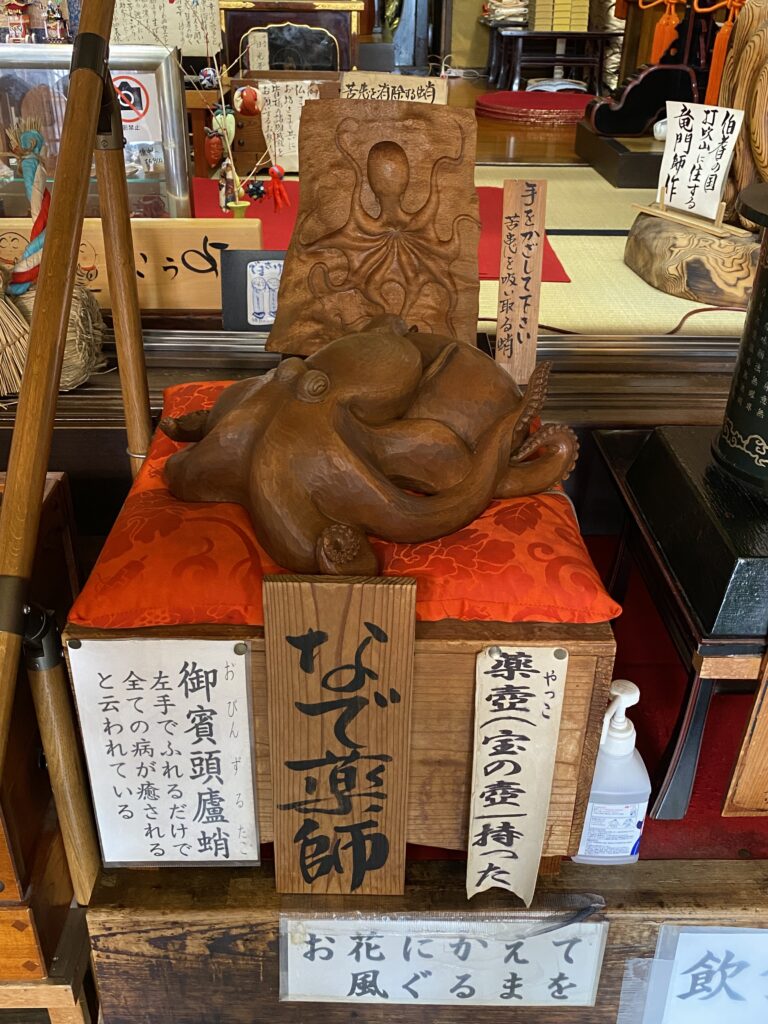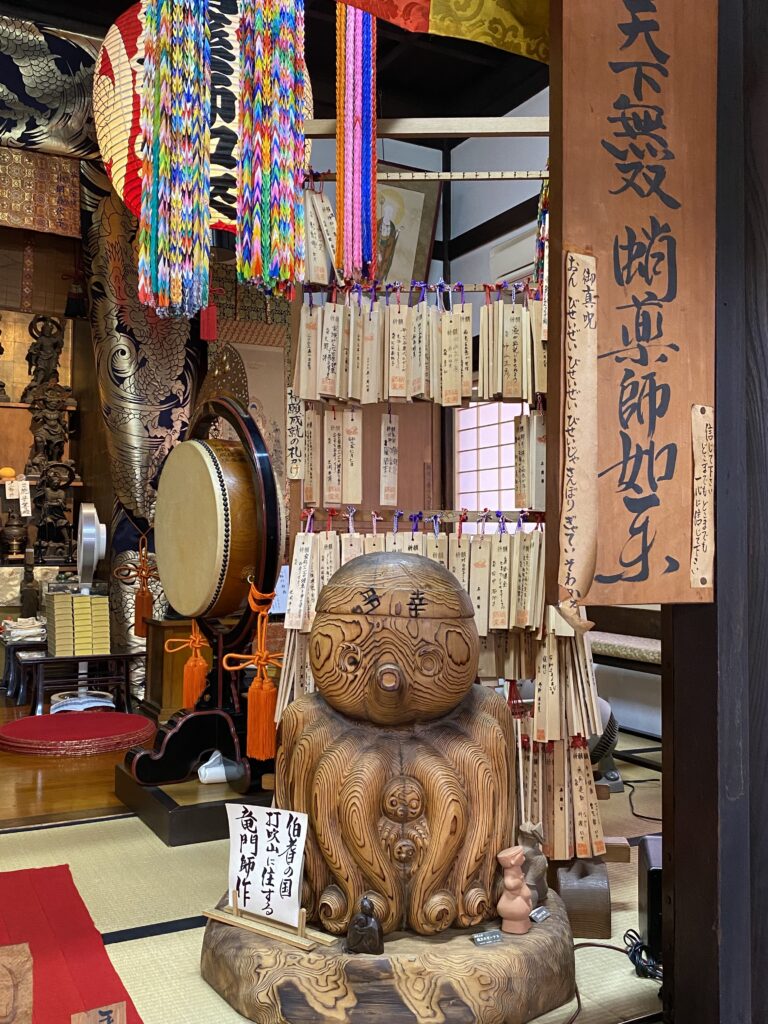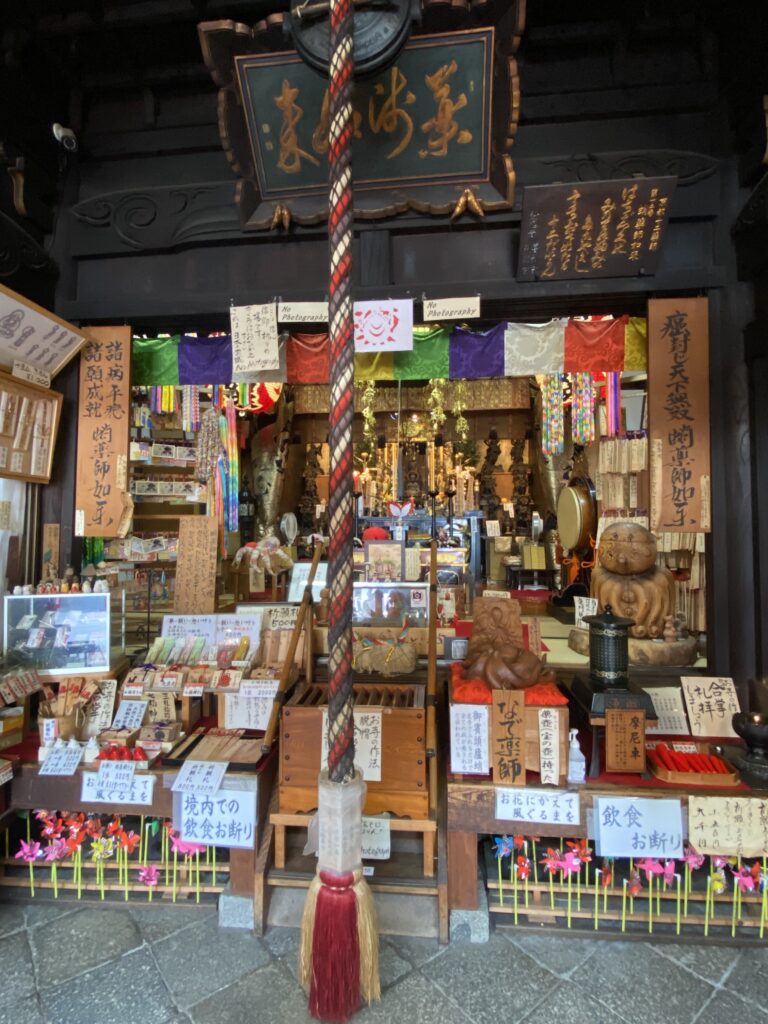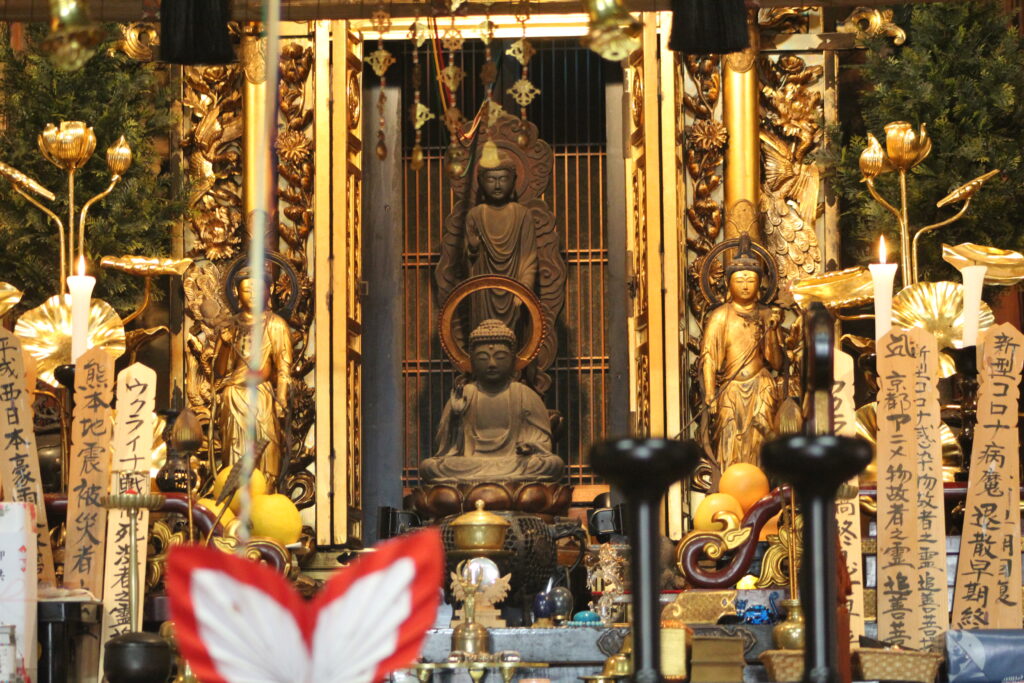Takoyakushi-do, located in Kyoto, translates as Hall of the Octopus Medicine Buddha. The temple is not affiliated with any particular sect of Buddhism, but is mainly dedicated to Yakushi-Nyorai or the Medicine Buddha. Takoyakushi-do is located in the heart of the city, inside of the Nishi-kyogoku shopping arcade, which is popular among locals and tourists alike. Even though it is a smaller temple, it receives many visitors due to its renowned healing power. There are many anecdotes circulating on websites and social media about people recovering from chronic conditions such as speech defects, potentially fatal illnesses such as leukemia, as well as many ailments.
Takoyakushi-do is one of many temples that was formed on the basis of a legend. Temples such as Kiyomizu-dera, Sensōji, and many others included in the Jivaka Project have historical legends that contribute to their current operations. Spoken and written stories are very important to Buddhist culture and teachings, as even the very inception and idea of the Buddha is attached to a story of a young prince’s journey to nirvana, or spiritual awakening.
The historical legends about the temple’s founding and power also center on healing. The first tells of a wealthy person named Rinshu who worshiped the Medicine Buddha at a temple far from Kyoto, in Mt. Hiei. The man eventually began to have trouble getting to the temple due to an illness. After some time, he had a dream in which the Medicine Buddha explained that a statue of him was inside a mountain and urged Rinshu to excavate it. After finding this statue he brought it back to his home-town and founded the temple that is now Takoyakushi-do around it. This was in the year 1181.
Further legends about the temple from the Kamakura period (1249-1256) tell about a story in which a Buddhist monk splurged on an octopus to feed his sick mother at a time when monks were not supposed to be purchasing things from marketplaces. In this story, when the monk is confronted and has to reveal what he has purchased, the container that held the octopus had transformed into eight Buddhist scriptures. The scriptures later became an octopus again and jumped into the nearby pond, turning it into healing water. Thus the temple came to have an octopus theme.
The Takoyakushi-do that stands today was founded around 1585 and is typically a place you would go to pray for others. Unusually for Japan, the head monastic is a female Abbess and most of the monastics at the temple are female. The temple continues to feature octopi, with various ornate sculptures as well as plush dolls that adorn the main altar. There is also a prominent wooden octopus called “Nade-Yakushi” (Rubbing Octopus) that is believed to hold great healing powers. The octopus is not supposed to be rubbed with the right hand, but cures all ailments of those who rub it with their left.
Media


VR Tour
Click here to view the accessible version of this interactive content
Bibliography
Academic Sources
- Eubanks, Charlotte D. 2011. Miracles of Book and Body: Buddhist Textual Culture and Medieval Japan. Berkeley: University of California Press.
External Links
- “Walk Around Kyoto.” May 5, 2020. https://ilovekyoto.com/places-to-see/takoyakushi-do-temple/.
- “Yakushi Nyorai (Bhaisajya Buddha). The Medicine Buddha, Healing Buddha.” May 22, 2014. https://www.onmarkproductions.com/html/yakushi.shtml.
- “Hokokuji: The Bamboo Temple of Kamakura.” All About Japan, July 27, 2022. https://allabout-japan.com/en/article/4161/.
- Japan RailPass, October 2, 2020. https://www.jrailpass.com/blog/sensoji-temple-tokyo.
- “Buddhist Bells of Prayer: A Universe of Sound Cleanses the Heart.” NHK World-Japan. NHK World, October 2, 2020. https://www3.nhk.or.jp/nhkworld/en/ondemand/video/2029170/.




